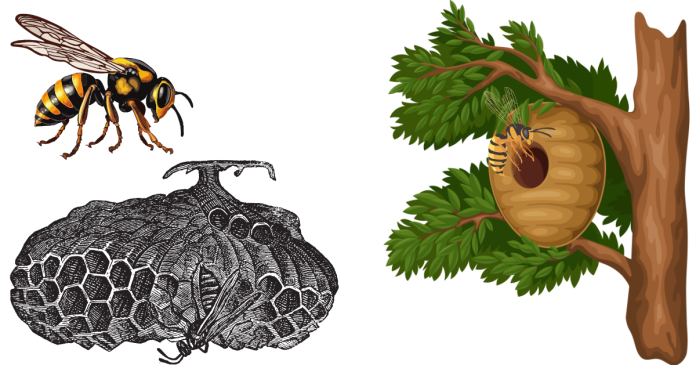Wasps play an essential role in the ecosystem by pollinating plants and controlling pest populations. However, having a wasp nest too close to your home or in a high-traffic area can pose a safety risk, especially for those allergic to stings. If you find yourself needing to remove a wasp nest, follow this guide to do so safely and effectively.
Important Precautions Before You Begin
Removing a wasp nest can be dangerous if not done correctly. Wasps are territorial and will defend their nests aggressively. Consider the following precautions:
- Know the Species: Identify the type of wasps you’re dealing with. Some species, like yellow jackets, are more aggressive than others, while paper wasps are relatively less hostile.
- Check for Allergies: If you or someone nearby is allergic to wasp stings, do not attempt to remove the nest yourself. Contact a professional pest control service.
- Timing Matters: Remove the nest at night or early morning when wasps are less active and inside the nest.
- Wear Protective Gear: Use thick clothing, gloves, closed-toe shoes, and a face covering to minimize the risk of stings.
What You’ll Need
- Wasp spray or insecticide specifically designed for wasps
- Flashlight (with red cellophane covering to avoid disturbing the wasps)
- Thick gloves and protective clothing
- A long pole or stick (optional, depending on the removal method)
- Garbage bag
- Ladder (if the nest is out of reach)
Step-by-Step Guide to Removing a Wasp Nest
Step 1: Assess the Situation
- Locate the nest and observe its size and activity.
- Ensure the nest is accessible without putting yourself in harm’s way. If it’s in a dangerous spot (e.g., near power lines or high in a tree), call a professional.
Step 2: Prepare for Removal
- Wait until night or early morning when wasps are less aggressive.
- Put on protective clothing to cover your entire body.
- Test your wasp spray to ensure it works and has a sufficient range (at least 10 feet is ideal).
Step 3: Spray the Nest
- Stand at a safe distance and use the wasp spray to coat the nest thoroughly.
- Aim directly at the entrance to target the wasps inside.
- Retreat to a safe area immediately after spraying to avoid any aggressive wasps that may emerge.
Step 4: Wait and Observe
- Leave the nest undisturbed for 24 hours to allow the insecticide to work.
- Check for activity the next day. If you still see wasps entering or exiting, repeat the spraying process.
Step 5: Remove the Nest
- Once you’re sure the wasps are dead, carefully remove the nest.
- Use a long stick or pole to knock it down if it’s hanging.
- Place the nest in a sealed garbage bag and dispose of it in an outdoor trash bin.
Alternative Methods
If you prefer not to use chemicals, here are a few alternative methods:
1. Soap and Water Spray
- Mix 2 tablespoons of dish soap with water in a spray bottle.
- Spray directly on the nest at night. The soap suffocates the wasps by clogging their breathing pores.
2. Smoke
- Build a small fire directly beneath the nest (if it’s safe to do so).
- The smoke will drive the wasps away, making it easier to remove the nest.
3. Vacuum Removal
- Use a shop vacuum with a long hose attachment.
- Place the hose near the nest entrance and let it run for several hours to capture the wasps.
When to Call a Professional
While DIY methods can be effective for smaller nests, larger or hard-to-reach nests are best handled by professionals. If you’re unsure or uncomfortable, pest control experts have the tools and experience to remove the nest safely.
Preventing Future Wasp Nests
Once the nest is removed, take steps to prevent wasps from returning:
- Seal Entry Points: Check for gaps, cracks, and holes in your home and seal them.
- Remove Food Sources: Keep trash bins sealed, and avoid leaving food or sugary drinks outside.
- Install Decoy Nests: Wasps are territorial and won’t build a nest near an existing one. Hanging a decoy nest can deter them.
- Regular Inspections: Check for early signs of nest building in spring or summer.
Removing a wasp nest can be a daunting task, but with the right preparation and precautions, it’s manageable. Always prioritize safety and don’t hesitate to call a professional if the nest is large or in a dangerous location. By addressing the problem quickly and preventing future nests, you can keep your home and outdoor spaces wasp-free.



